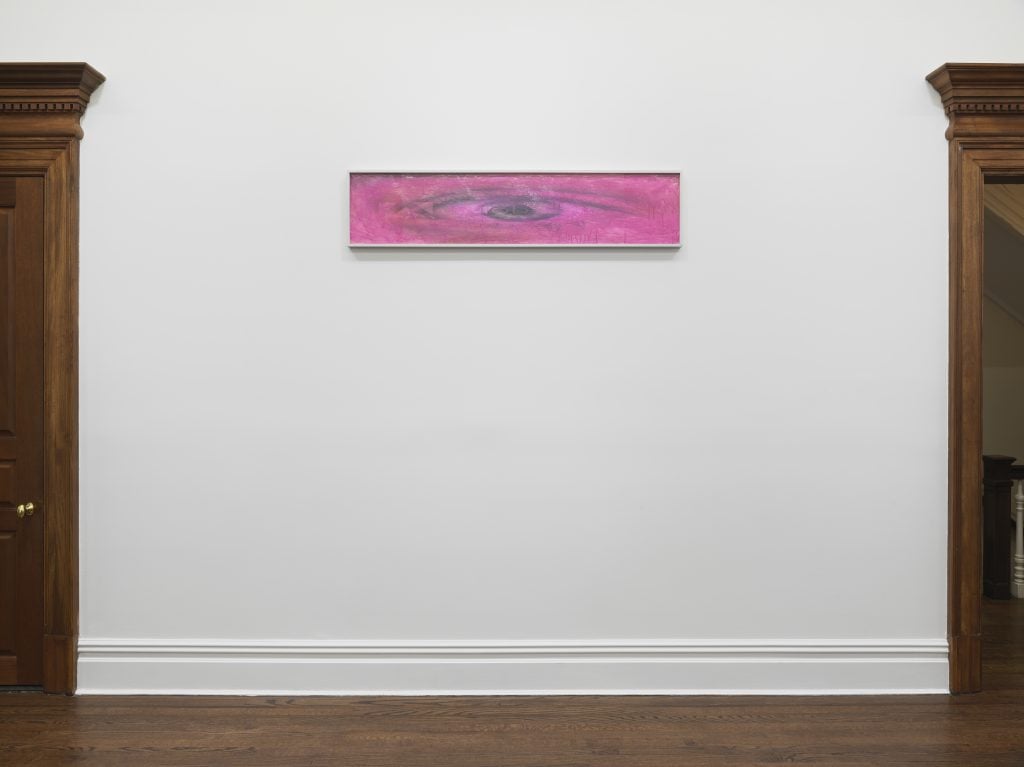The Back Room
The Back Room: The Donation Detour
This week: the backlash against charity auctions, Kyiv’s art scene stands strong, a major Picasso makes its auction debut, and much more.

This week: the backlash against charity auctions, Kyiv’s art scene stands strong, a major Picasso makes its auction debut, and much more.

Artnet News

Every Friday, Artnet News Pro members get exclusive access to the Back Room, our lively recap funneling only the week’s must-know intel into a nimble read you’ll actually enjoy.
This week in the Back Room: the backlash against charity auctions, Kyiv’s art scene stands strong, a major Picasso makes its auction debut, and much more—all in a 6-minute read (1,809 words).
__________________________________________________________________________

Installation view of “Sprüth Magers x Artadia: An Exhibition to Benefit the Next Generation of Artists,” at Sprüth Magers New York, April 4–22, 2023. Pictured: Pamela Rosenkranz, I Wish I Could Cry Blood (Stare Circle) (2021). Photo by Genevieve Hanson, courtesy of Sprüth Magers.
Tim here. In the art world of 2023, charity auctions have become almost inescapable. Whether in person or online, these events have raised millions of dollars for dozens of good causes inside and outside the art world. They’ve also helped several in-demand artists achieve record prices, bolstering the case for benefit auctions as a win-win for the industry.
And yet, over the past few years, the hidden flaws of the format have started nudging some galleries and nonprofit organizations to pivot in one of two directions: away from using major auctioneers as charitable middlemen, and toward abandoning the benefit auction in favor of the benefit exhibition.
Why? That was the subject of this week’s Gray Market.
Anchoring the analysis is a three-week group show at Sprüth Magers’s New York space benefiting the American nonprofit Artadia. Eight members of the gallery’s roster are participating, ranging from canonical veterans Barbara Kruger and Louise Lawler to fast-rising ultra-contemporary artists Lucy Dodd and Pamela Rosenkranz.
Although Artadia never requested a specific share of sales proceeds, Sprüth Magers pledged its entire percentage and gave each participating artist the autonomy to donate as much or as little of their cut as they chose. Of the 12 works in the show (priced from $7,500 to $100,000), five had been placed by Wednesday, with 100 percent of proceeds from those transactions going to Artadia.
But the key to the charity exhibition is that the nonprofit organization on the receiving end isn’t the only one that benefits…
And then there are the downsides avoided by ignoring gavel-based giving…
Hauser and Wirth, whose ongoing series of benefit projects, dubbed Art for Better, has zagged from the standard benefit auction in two major ways over the past few years.
In October 2020, the mega-gallery raised $8.2 million for 16 nonprofits through a benefit exhibition of 100 works, some of which were exhibited at its two New York locations for multiple weeks. Hauser and Wirth donated all fees and commissions from the exhibition, while also allowing artists to choose what percentage (if any) of their share to pass along to the beneficiary organizations.
In December 2022, the gallery raised almost another $4.6 million for the United Nations Refugee Agency through an online benefit auction facilitated entirely in house—the first time a dealer had ever opted out of using a third-party auctioneer for such an event, according to gallery president Marc Payot. The move enabled Hauser to nix the buyer’s premium and funnel all proceeds to charity.
_______________________________________________________________________________
The ultimate question about these alternatives to traditionally structured benefit auctions is how much uptake they’ll ultimately get among other dealers, artists, and charitable organizations.
It sounds to me like the momentum is gathering. Philomene Magers said that her gallery would definitely consider returning to the benefit exhibition model with the right partner—and would encourage other dealersto do the same. Carolyn Ramo, the executive director of Artadia, said that several other nonprofits have asked for details on how to put together their own in-gallery initiative.
The surge in interest doesn’t make the standard fundraising structure evil, or even necessarily so flawed that it should be avoided. But it does imply that galleries and nonprofits focused on long-term value have their eyes, ears, and minds open wider to experimentation on this front than ever before.
_______________________________________________________________________________
The latest Wet Paint tracks rumors of Joe Bradley‘s defection to David Zwirner and Anish Kapoor‘s unorthodox compensation for the so-called “Mini-Bean.”
Here’s what else made a mark around the industry since last Friday morning…
Art Fairs
Auction Houses
Galleries
Institutions
Tech and Legal News
_______________________________________________________________________________
“With the constant shelling throughout the winter, we decided to postpone our reopening plans… Now, as the situation has stabilized, we feel it is the right time to reopen… to support the Ukrainian art scene during challenging times.”
—Max and Julia Voloshyn, cofounders of Kyiv’s Voloshyn Gallery, on their decision to resume programming at their space in Ukraine’s capital as of last Friday, April 14. The gallery had been converted to a bomb shelter and haven for local artists and arts workers since the Russian invasion began in early 2022. (Artnet News)

Pablo Picasso, Nature morte à la fenêtre, (1932). Courtesy of Christie’s.
_______________________________________________________________________________
Date: 1932
_______________________________________________________________________________
Estimate: $40 million
_______________________________________________________________________________
Seller: Private collection
_______________________________________________________________________________
Selling at: Christie’s (NY) 20th Century Evening Sale
_______________________________________________________________________________
Sale date: May 11, 2023
_______________________________________________________________________________
This never-before-auctioned portrait of Picasso’s lover Marie-Thérèse Walter will lead Christie’s 20th Century evening sale in New York next month. The large-scale painting, which does not carry a guarantee, is one of multiple works by the artist set to go under the hammer this season to coincide with the 50th anniversary of his death. But the year of its creation may be the bigger deal.
The year 1932 was widely recognized as a pivotal one in Picasso’s career. He created more than 100 important works during those 12 months, including various portraits of the then-22-year-old Walter, his secret lover during his marriage to ballerina Olga Khokhlova.
Several of those 1932 paintings have commanded gaudy prices during recent May auctions in New York. Picasso’s Nude, Green Leaves and Bust went for more than $106 million after fees at a Christie’s sale in 2010. Femme assise près d’une fenêtre (Marie-Thérèse) brought more than $103 million at Christie’s in spring of 2021. And last May, Femme nue couchée, from the collection of hedge fund titan Steven A. Cohen, raked in $67.5 million at Sotheby’s.
Christie’s is hoping Nature morte à la fenêtre continues the trend. Publicly exhibited only twice, the work was originally among the 10,000 pieces inherited by the artist’s granddaughter Marina Picasso. It was later acquired by the late Swiss dealer Jan Krugier, who advised Marina until his death in 2008. The painting then went to Krugier’s descendants, who are now bringing it to market.
—Vivienne Chow
_______________________________________________________________________________